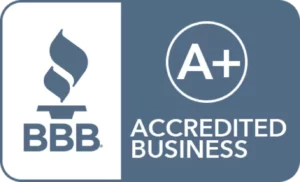Many ponder whether they can or should cash out their IRA or 401(k) to buy an investment property. After all, real estate is one of the top assets held by millionaires. Still, few people know that you can use your IRA or 401(k) to purchase an investment property without tax consequences. This article will discuss how you can use your retirement funds to legally buy an investment property without suffering any tax consequences.
Should I Cash Out My IRA to Buy an Investment Property?
Before deciding whether you should cash out your IRA to buy an investment property, it is important to consider the tax consequences. In the case of a pre-tax IRA, cashing out your IRA has significant tax implications. Cashing out your IRA prior to the age of 59½ will trigger a 10% early distribution penalty, plus an income tax on the amount of the distribution. Whereas, cashing out an IRA after the age of 59½ will just be subject to income tax and no 10% early distribution penalty. On the other hand, in the case of a Roth IRA, cashing out a Roth IRA before the Roth IRA owner reaches the age of 59½ and/or the Roth IRA was opened 5 years can trigger a taxable distribution, plus a 10% early distribution penalty on the earnings generated from the Roth IRA contributions. Therefore, cashing out your IRA or 401(k) to buy an investment property may not be the best idea. However, you do have other options.
What is a Self-Directed IRA?
Since the creation of IRAs in 1974, alternative investments such as real estate have always been permitted to be invested by IRAs. A Self-Directed IRA is essentially an IRA account that is permitted to be invested in alternative assets, such as real estate or even cryptocurrencies. In other words, a Self-Directed IRA follows the same rules as a Traditional or Roth IRA respectively from a contribution and distribution standpoint.
Read More: Self-Directed IRA for Real Estate

Why Use a Self-Directed IRA to Invest in Real Estate
Instead of paying taxes on a distribution, a Self-Directed IRA to invest in real estate is a tax-savvy strategy used by countless investors. However, in order to take advantage of the tax advantages of using a Self-Directed IRA to make real estate and other investments, it is crucial that the investment be made directly by the retirement account and not the individual IRA owner. For example, in the case of a real estate investment, the investment must be made in the name of the IRA for the income and gains from the IRA investment to be excluded from immediate tax.
Starting in 1974 with the creation of IRAs, Congress wanted to incentivize Americans to save. Hence, they created rules whereby income and gains from an IRA investment would not be subject to tax and would benefit from a tax-deferral regime. Tax deferral is when all gains generated by a pre-tax retirement account investment flow back into the retirement account tax-free. This allows your retirement funds to grow at a much faster pace than if the funds were held personally, allowing you to build for your retirement more quickly. This is also known as compounding interest, which Albert Einstein coined the 8th wonder of the world.
Based on the concept of tax deferral, using an IRA to make investments versus using personal funds has enormous tax benefits. For example, if an IRA owner makes an annual contribution of $1825 a year from age 21 to 70, assuming an 8% annual rate of return and a 25% tax rate, the IRA owner would have $1,045,306 versus just $462,488 with personal funds.
Related: Tax Deferral vs. Tax Free Investing
How Do I Start a Self-Directed IRA?
There are two ways to start a Self-Directed IRA. The first is making an IRA contribution. So long as you or a spouse have earned income, in 2024 you can contribute up to $6000 or $7000, if over the age of 50, to an IRA. The IRS imposes certain income limitations to determine if your IRA contribution will be tax deductible. For example, if you are married and filing jointly and earn more than $214,000, you will not be able to receive a tax deduction for the IRA contribution. Whereas, in the case of a Roth IRA, the “backdoor” Roth IRA allows any taxpayer to make a Roth IRA contribution irrespective of income. Unlike a pre-tax IRA, a Roth IRA is an after-tax IRA, but so long as the Roth IRA owner is over the age of 59½ and the Roth IRA has been opened for at least five years, all Roth IRA distributions are tax-free.
The second way to fund a Self-Directed IRA is via an IRA transfer or rollover. Transfers and rollovers are types of transactions that allow movements of assets between like IRAs – Traditional IRA to Traditional IRA. An IRA transfer is the most common method of funding a Self-Directed IRA. An IRA rollover generally involves the rollover of funds form a 401(k), 403(b), 457(b), or other employer retirement plan to a Self-Directed IRA. IRA transfers are-tax free and can be done an unlimited amount of times. Whereas, an indirect IRA transfer, where the IRA funds are first transferred to the IRA owner instead of the IRA custodian can only be done once every 12 months and the funds must be transferred to an IRA custodian within 60 days. In contrast, a rollover of 401(k) funds can only be accomplished when the 401(k)-plan participant satisfies a plan triggering event, for example, employment separation or reaches the age of 59½. Like IRA transfers, 401(k) rollovers are also tax-free.
*If you are Self-Employed, you also have the option of using your IRA or 401(k) to invest in real estate using a Solo 401(k).
Learn More:
Investment Properties for Beginners
Beginners Guide to Investing in Real Estate with Retirement Funds







